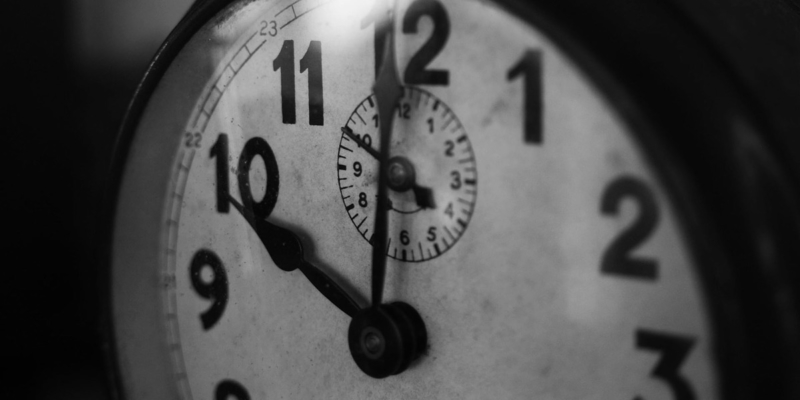People often wish there were more hours in the day because they simply can’t accomplish everything they need to in the time available. The question is whether more time would make a difference, but we’ll never know the answer because time itself cannot be managed. There are 24 hours in a day, no more and no less, and even though we can’t change time, we can change what we do with it. Forget about managing time and start focusing on increasing productivity.
Waste Not, Want Not
The key to increasing your productivity is to not waste the time you have. The results of a salary.com survey showed that 89% of survey participants admitted to wasting anywhere from 30 minutes to several hours of their time at work each day. Much of this is due to ineffective use of the time available to them. An infographic from Scoro reports that “most of us spend more than 40% of our days doing non-work tasks.” Here’s their breakdown of the top five time-wasting activities in the workplace:
- 43.5% of time is wasted on email
- 42.3% of time is wasted in meetings
- 21.8% of time is wasted browsing online
- 17.4% of time is wasted while commuting
- 10% of time is wasted by procrastination
As a good baseline, the 60-30-10 rule recommends a small business owner, like the spa retailer, allocate his or her time with 60% on marketing and selling, 30% or strategic development, and 10% on admin tasks. But how do you make that happen?
Spend Your Time
Let’s start with the idea of spending time. Think about that for second. Now compare it to spending money. When you spend money, you expect to receive something of value in return, right? The same is true of spending time. When you spend your time on something, you should get something of value in return—a completed task or an achieved goal, for example. An Entrepreneur article suggests that there are three ways to spend time:
- On thoughts
- On conversations
- On actions
If you want to spend your time more effectively, you have to figure out how it’s currently being spent. One way to do this is to take a week to track what you do with your time at work. Carry a small notepad or planner and quickly jot down how you use your time each day. At the end of the week, ask yourself what thoughts, actions and, conversations you’re spending your time on and how you could restructure your days to become more efficient and more productive.
Manage Yourself
Time is a matter of choice. Everyone has 24 hours each day in which to accomplish their goals. Forget about how much more time you think you need and focus on how you choose to use the time you have.
Managing yourself means creating and adhering to a schedule, learning to say no, and prioritizing tasks.
The best way to use your time effectively is to develop a success plan for each day. According to Forbes, “66% of people do not plan their days.” Of those that do plan their days ahead of time, 68% feel like the day was a success.
When you sit down at the end of one day to develop your plan for the next day, focus on limiting interruptions to your work. Interruptions in the form of email, instant messages, office drop-ins, and phone calls distract you from the task at hand. Remember that Scoro infographic from earlier? Good, because it has more to say:
- When we’re interrupted, it takes nearly 25 minutes to return to the original task.
- We spend approximately 16 minutes refocusing after handling incoming email.
- On average, we switch activities every 3 minutes.
That’s almost 45 minutes of wasted time for EACH interruption. If your work is interrupted six times in a day, that’s four and a half hours of wasted time every day. Can you afford to lose half a day to refocusing? Of course not! Here’s what you can do:
- Assign time to activities and conversations that are important to your success.
- Decide what result you want from tasks, calls, and meetings before you start them and take time immediately after to determine if you achieved the desired outcome.
- Schedule interruptions by setting office hours when it is okay for people to just drop-in.
- Use a Do Not Disturb sign and enforce it so you can focus on completing tasks.
- Commit to checking email a maximum of three times a day: first thing in the morning, after lunch, and right before you go home.
Finally, for the love of sanity, stop answering every ring, ding, and beep just because it’s ringing, dinging or beeping! There will be plenty of time to return messages after you finish the task at hand.
Streamlining
There are 1,440 minutes in a day, and there are probably just as many methods for increasing productivity. Relax, we’re only going to talk about a couple of them, starting with the 4-D Method for using your time more effectively. This method involves sorting your recurring activities into four quadrants.
- DO. High value, important activities that you should continue to do
- DIMINISH. Activities that you can do less frequently such as skipping meetings or only attending some of the time
- DELEGATE. Pass on less important activities to others or break down a larger task into smaller ones that can be parsed out to several people
- DISCARD. Look for activities you can eliminate altogether such as scheduling meetings when a phone call would work just as well
Olympic Hot Tub owner Don Riling admits that delegating is the most difficult of these, but he also emphasizes the importance of being able to “bless and release” some tasks in order to make the most of his time.
I try not to be technology-dependent, so if technology fails I can still work. - Don Riling
Now that you’ve weeded out the inefficiencies, how are you going to keep track of your schedule? Most people will use an electronic planner on their phone or computer; however, there is another method that’s kind of old school: write it out. It may sound more time-consuming than digital methods, but it really isn’t. There are real benefits of hand writing your success plan. Writing by hand:
- is less distracting than digital applications
- takes more effort which causes you to deliberate more over tasks
- allows you to customize your plan to meet your specific needs
- helps you practice mindfulness instead of just mindlessly entering data
Riling recommends using a combination of technology and written schedules. “I try not to be technology-dependent, so if technology fails I can still work.” He tends to keep both an Outlook calendar and a paper and ink planner to cover his bases.
Points to Remember…
Time management is a myth, self-management is a reality. The amount of time you have is irrelevant. It’s what you DO with your time that makes the difference. Commit to spending a minimum of 50% of your time on the thoughts, conversations, and activities that produce the most results.








Leave A Comment